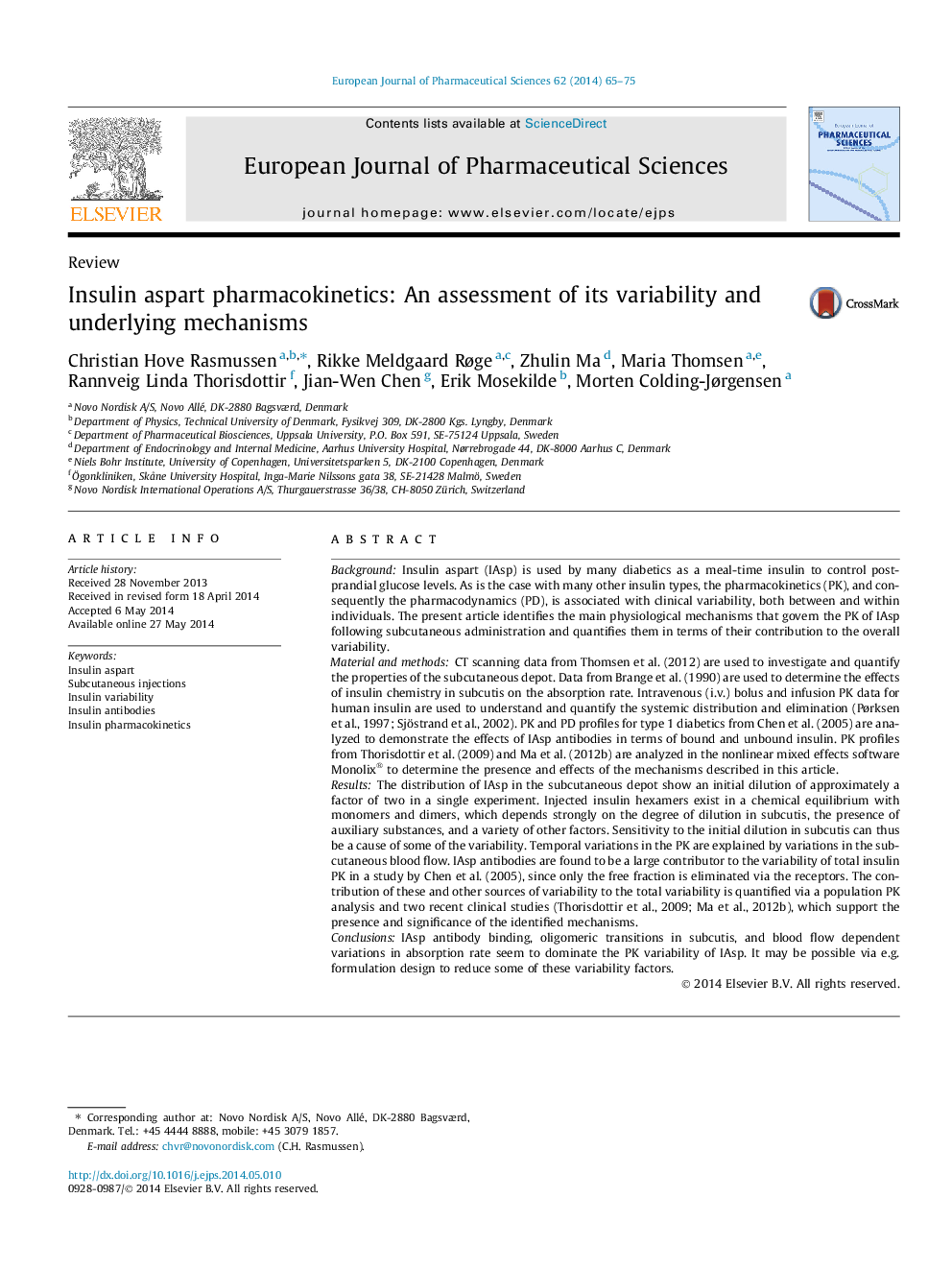| کد مقاله | کد نشریه | سال انتشار | مقاله انگلیسی | نسخه تمام متن |
|---|---|---|---|---|
| 2480375 | 1556188 | 2014 | 11 صفحه PDF | دانلود رایگان |
BackgroundInsulin aspart (IAsp) is used by many diabetics as a meal-time insulin to control post-prandial glucose levels. As is the case with many other insulin types, the pharmacokinetics (PK), and consequently the pharmacodynamics (PD), is associated with clinical variability, both between and within individuals. The present article identifies the main physiological mechanisms that govern the PK of IAsp following subcutaneous administration and quantifies them in terms of their contribution to the overall variability.Material and methodsCT scanning data from Thomsen et al. (2012) are used to investigate and quantify the properties of the subcutaneous depot. Data from Brange et al. (1990) are used to determine the effects of insulin chemistry in subcutis on the absorption rate. Intravenous (i.v.) bolus and infusion PK data for human insulin are used to understand and quantify the systemic distribution and elimination (Pørksen et al., 1997; Sjöstrand et al., 2002). PK and PD profiles for type 1 diabetics from Chen et al. (2005) are analyzed to demonstrate the effects of IAsp antibodies in terms of bound and unbound insulin. PK profiles from Thorisdottir et al. (2009) and Ma et al. (2012b) are analyzed in the nonlinear mixed effects software Monolix® to determine the presence and effects of the mechanisms described in this article.ResultsThe distribution of IAsp in the subcutaneous depot show an initial dilution of approximately a factor of two in a single experiment. Injected insulin hexamers exist in a chemical equilibrium with monomers and dimers, which depends strongly on the degree of dilution in subcutis, the presence of auxiliary substances, and a variety of other factors. Sensitivity to the initial dilution in subcutis can thus be a cause of some of the variability. Temporal variations in the PK are explained by variations in the subcutaneous blood flow. IAsp antibodies are found to be a large contributor to the variability of total insulin PK in a study by Chen et al. (2005), since only the free fraction is eliminated via the receptors. The contribution of these and other sources of variability to the total variability is quantified via a population PK analysis and two recent clinical studies (Thorisdottir et al., 2009; Ma et al., 2012b), which support the presence and significance of the identified mechanisms.ConclusionsIAsp antibody binding, oligomeric transitions in subcutis, and blood flow dependent variations in absorption rate seem to dominate the PK variability of IAsp. It may be possible via e.g. formulation design to reduce some of these variability factors.
Figure optionsDownload high-quality image (79 K)Download as PowerPoint slide
Journal: European Journal of Pharmaceutical Sciences - Volume 62, 1 October 2014, Pages 65–75
